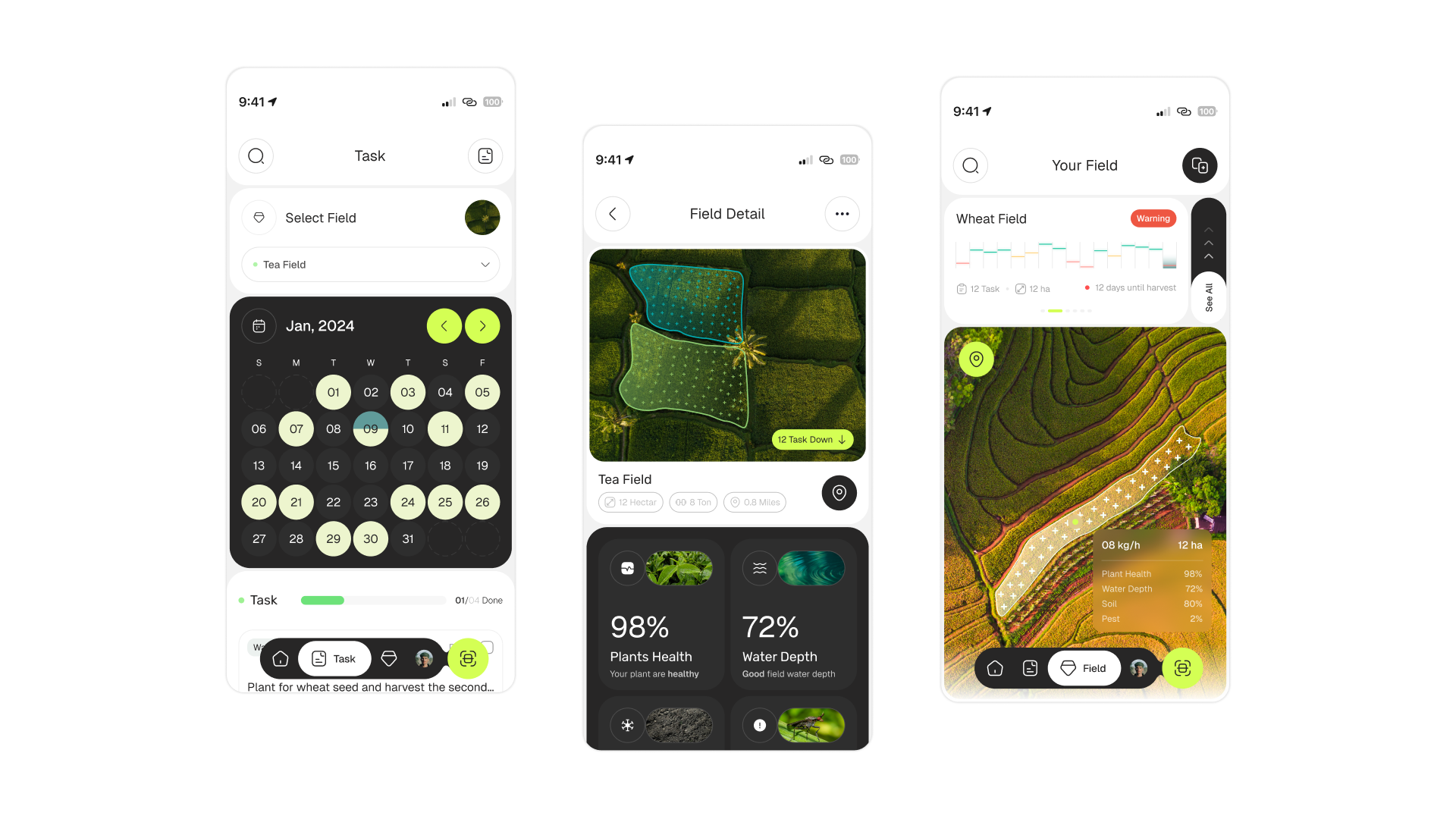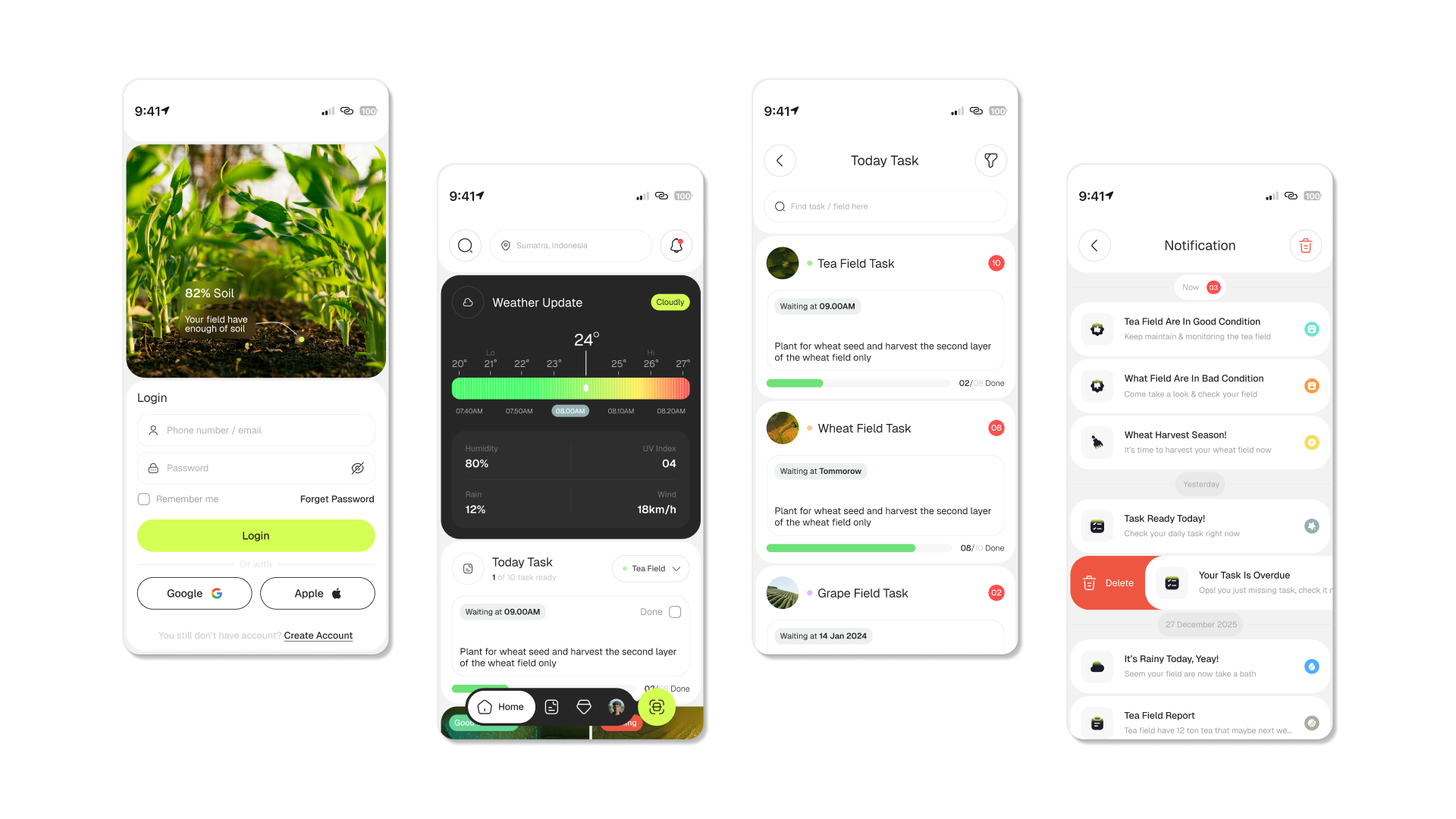Intelligent terminal and elevator management systems help make the grain handling business safer and more cost-effective by minimizing human labor, improving storage conditions and speed of product transportation.
The introduction of such software and hardware systems helps to solve a number of urgent problems:
In addition, the operator will be instantly alerted to unusual temperature rises in specific storage areas that may indicate product deterioration, allowing timely decisions to be made about its movement.
An automated grain terminal management system can be equipped with any necessary tools to ensure the efficient operation of your business. At the same time, all models work on one centralized server, thanks to which they can interact as a single mechanism.

The choice of technology stack when developing grain terminal management systems affects system performance, security, scalability, and many other factors. However, first of all, when choosing technologies, specialists are guided by the platform and operating system for which the product is being developed.
There are three main options here:
It is installed on any device running on IOS or Android operating systems and is highly mobile, since the operator is not tied to a specific workplace and can perform his duties from anywhere where there is a network connection. Native technologies can be used to develop such solutions: for Android, these are Java and Kotlin programming languages, and for IOS, Objective-C and Swift. In addition, there are cross-platform tools that allow you to create applications that work on both operating systems, such as the Flutter framework and the Dart language.
Work on a PC or laptop as a standalone application. For their development, the Python or PHP languages are often used, and, accordingly, their frameworks: Django/Flask or Yii2/Laravel.
Such solutions work in a browser, so they can run on any device or operating system, which makes them quite flexible and, at the same time, functional. The front-end part of such projects is created using static HTML, CSS and JavaScript or reactive technologies: Vue.js and React.js. The backend, or server part, is built on one of these languages: PHP and its Yii2 / Laravel frameworks, Python and Django / Flask frameworks, or on the Node.js platform and the JavaScript language.

Grain terminal management systems are complex software that must take into account not only the rules of operation and grain transshipment, but also business processes within the company itself. Therefore, in order for the product to fully meet the client’s requirements, its technology is implemented in stages. Let’s take a closer look at each stage.
Stage 1. Collection of information
When starting development, specialists first of all need to determine the specific goals of the project and the tasks it will solve. To answer these questions, meetings are held with the client or their representatives, and the company’s IT infrastructure is analyzed.
Stage 2. Prototyping and preparation of technical documentation
At this stage, the software is designed and a prototype is created – a schematic visualization of the main parameters and capabilities. Most often, it includes
After that, the prototype is presented to the client and, if necessary, finalized. The advantage of this approach is that any, even the most global changes in the mockup are implemented quickly enough, which allows you to foresee and eliminate all possible problems at the early stages with minimal use of resources.
When the mockup is approved, the technical documentation of the project is formed, the optimal technology stack is selected, and an implementation plan is drawn up.
Stage 3. Design development
Professional user interface design helps to make the application simple and easy to use. It increases staff satisfaction during work and reduces the time operators will need to train. Since grain terminal management systems are developed within the framework of clear business requirements and objectives, their design is in most cases created individually. Template options are possible, but due to their limitations, they are not able to provide the required level of functionality, so this approach is used only in case of severe budget constraints.
Stage 4. Programming
Programming is one of the most labor-intensive and time-consuming stages of software development. It consists of two stages:
At this stage, developers design the code architecture, form the logic of the functionality, and ensure that the application interacts with external services, such as temperature sensors in grain storage facilities.
Stage 5. Testing
Before putting the product into operation, you need to make sure that all its modules work properly and in accordance with the client’s requirements. To do this, QA engineers are involved in the project and perform several levels of testing:
If a problem is detected at any stage, the specialist draws up a detailed bug report and passes the project to the responsible developer, and after fixing the error, retests it.
Stage 6. Technical support and development
Despite all the thoroughness of testing, it is impossible to completely cover a product with tests. Therefore, after the product is put into operation, users may still encounter various unforeseen errors at first. To eliminate them, developers are involved in the project again. Such work is performed as part of technical support. Project development involves further improvement of the existing functionality. For example, this may be necessary when expanding a business or due to other factors. In this case, the full development cycle is repeated again: developers study new tasks, create a prototype, make adjustments to design layouts, and implement the necessary functions if necessary. After that, the changes are tested on a production server and implemented in the company’s IT infrastructure as a new patch.
Intelligent terminal and elevator control systems significantly increase the efficiency of the company, reduce associated costs and minimize the risks associated with storage and processing of products. Investments in the implementation of such a system will be a serious step towards the development and competitiveness of your business.
AVADA MEDIA has extensive experience in developing solutions for automating the operation of terminals. When creating such software, we use only modern and innovative technologies that allow us to implement functionality of any complexity.
Our works
Contact the experts Have a question?
The user, filling out an application on the website https://avada-media.ua/ (hereinafter referred to as the Site), agrees to the terms of this Consent for the processing of personal data (hereinafter referred to as the Consent) in accordance with the Law of Ukraine “On the collection of personal data”. Acceptance of the offer of the Consent is the sending of an application from the Site or an order from the Operator by telephone of the Site.
The user gives his consent to the processing of his personal data with the following conditions:
1. This Consent is given to the processing of personal data both without and using automation tools.
2. Consent applies to the following information: name, phone, email.
3. Consent to the processing of personal data is given in order to provide the User with an answer to the application, further conclude and fulfill obligations under the contracts, provide customer support, inform about services that, in the opinion of the Operator, may be of interest to the User, conduct surveys and market research.
4. The User grants the Operator the right to carry out the following actions (operations) with personal data: collection, recording, systematization, accumulation, storage, clarification (updating, changing), use, depersonalization, blocking, deletion and destruction, transfer to third parties, with the consent of the subject of personal data and compliance with measures to protect personal data from unauthorized access.
5. Personal data is processed by the Operator until all necessary procedures are completed. Also, processing can be stopped at the request of the User by e-mail: info@avada-media.com.ua
6. The User confirms that by giving Consent, he acts freely, by his will and in his interest.
7. This Consent is valid indefinitely until the termination of the processing of personal data for the reasons specified in clause 5 of this document.
Send CV
Contact us in any convenient way for you:
+ 38 (097) 036 29 32